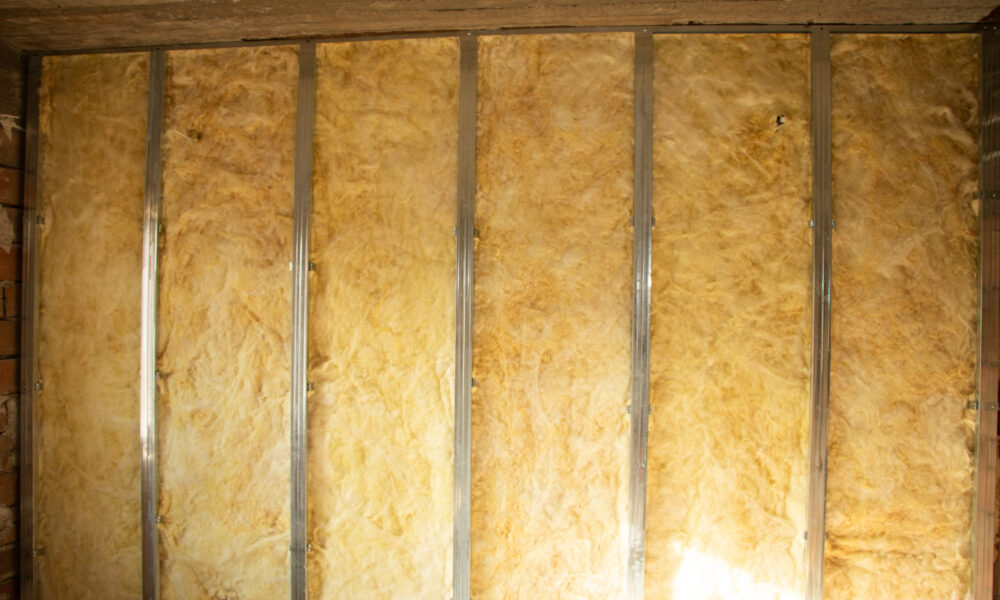
Internal Wall Insulation (IWI) is an alternative to fitting External Wall Insulation. It is appropriate and usually installed in cases where EWI cannot be fitted – such as on Grade II or Grade II* listed buildings where it is not possible to change the external appearance of the property but the inside of the building can be changed.
Internal Wall Insulation is achieved by fitting insulation boards to the wall on the inside of the property and then covering with plaster board and plaster. Alternatively, stud walls (internal walls) can be filled with mineral wool fibre and then again plastered or plaster-boarded.
The end result is a much warmer and more energy efficient building whose external appearance hasn’t changed.
How does Internal Wall Insulation work?
Green Homes Solutions Ltd are an approved installer of a range of IWI systems. All systems work by creating a thermal barrier between the rooms inside the property and their external walls. Interior walls (e.g., stud partition walls) can also be insulated to prevent heat spreading between rooms in the building where that effect is not desired – it doesn’t make sense to be heating rooms that aren’t being used, for example.
To install Internal Wall Insulation, we first treat the interior of the property and remove any old decoration, plaster or fixings that are likely to prevent the IWI from being fitted properly. Any damp patches will be professionally treated at this stage. Metal battons are then affixed to the inside of any external solid walls to accommodate insulation board. A suitable air gap (approx. 1″) is left between the insulation material and the exterior walls to allow the walls to ‘breathe’ and to ensure damp or condensation does not build up on the inside of the property.
Once exterior walls have been insulated and interior walls constructed or filled with insulation material (if necessary) then the interior of the room or rooms being treated is plaster-boarded (sometimes called ‘drylining’). Modern plaster board has a very high quality finish and in certain cases we can use foil insulated plaster board to improve thermal efficiency even further. Joins in the plaster board are then taped over and filled, along with any holes. The whole of the interior may also be skimmed, including ceilings, if the customer desires a certain finish.
Finally, any original features that were to be retained are reinstated. Skirting boards, cornicing, coving and door frames are then replaced. Window cills may often need to be extended, and the window frames will sometimes need to be cleaned and / or treated. The room can then be re-decorated as desired.
What are the benefits of Internal Wall Insulation?
The main benefits of installing Internal Wall Insulation on your property are:
- It reduces energy bills by up to 50%
- It is generally cheaper to install than External Wall Insulation
- It will increase the value of the property
- It prevents damp and condensation from taking hold
- The property becomes warmer and more comfortable to live in
- It acts as ‘soundproofing’, so rooms are quieter
- Redecoration after insulation improves ‘look and feel’
- It can be done over a period of time, on a room-by-room basis
Are there any drawbacks?
The installation is also more disruptive than for External Wall Insulation. However, we always seek to keep disruption to an absolute minimum on all contracts.
A consultation with us will help to identify whether Internal or External Wall Insulation is right for your property. We always provide a no-obligation quote with a complete breakdown of costs.
Finally, it’s worth noting that in certain cases (e.g., where kitchens and bathrooms need to be replaced) that External Wall Insulation can be a cheaper option that will add more value to your home in the long-run.
How long does an IWI project take and what will it cost?
We would normally be on site for around 1 week in order to fully insulate and internally plaster a 3-bedroom property. Larger properties can take longer, although a number of factors are involved. For example, if you’re already planning on ‘gutting’ and completely renovating your home, then costs may be reduced as we will not need to preserve certain aspects. It’s often quicker and cheaper to take a building ‘back to brick’ and to reinstate internal walls and re-plaster, than it is to try to try to retain old internal walls and their various fixtures and fittings.
In order to get an accurate price for any works, we will need to see your property and measure up. All quotations we give are completely free and with no obligation. You can request a quote from us here.
